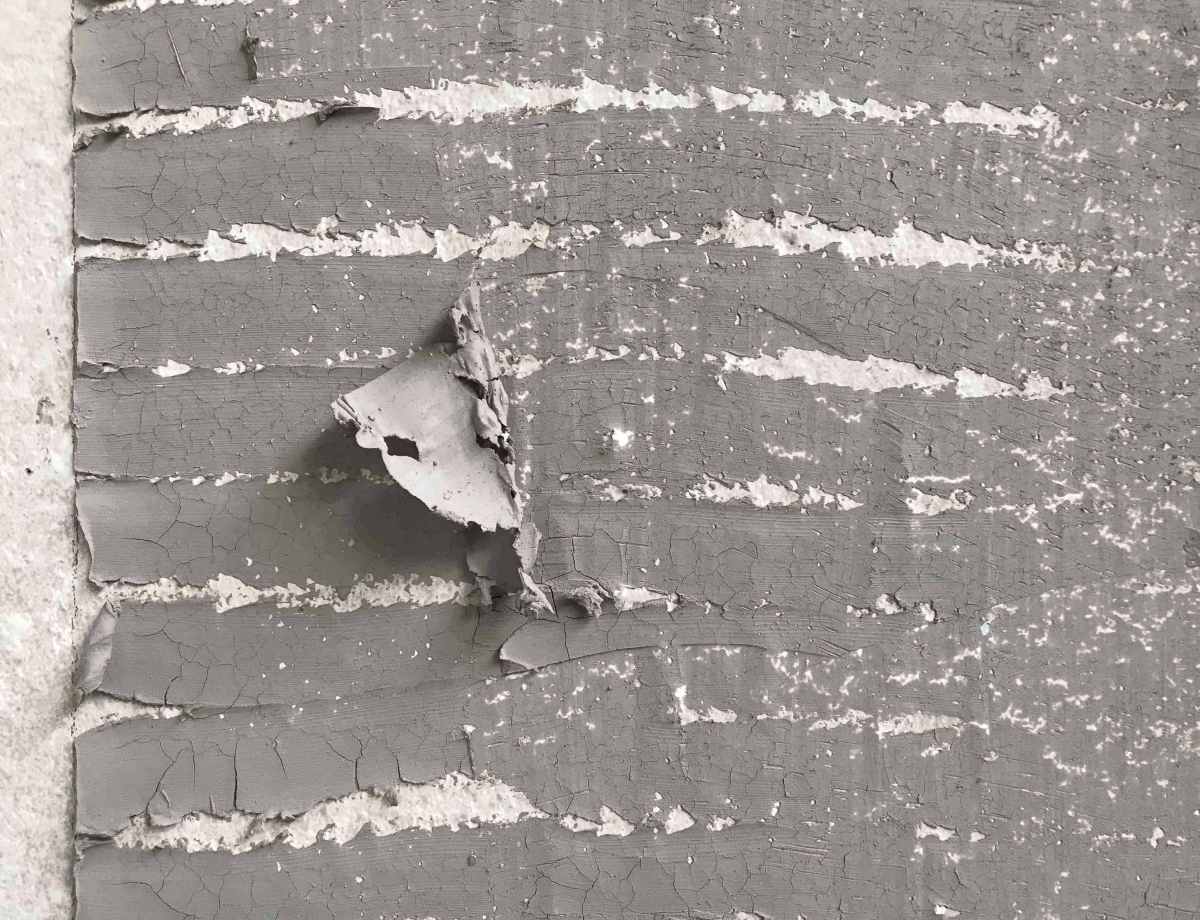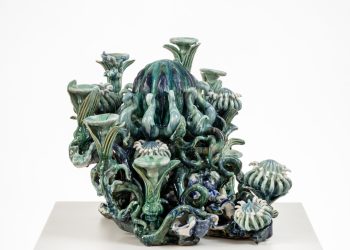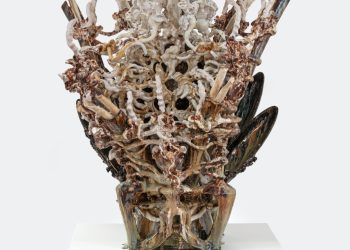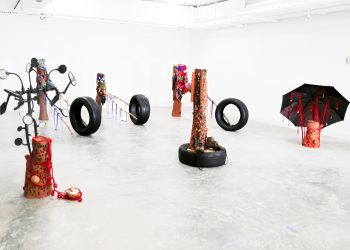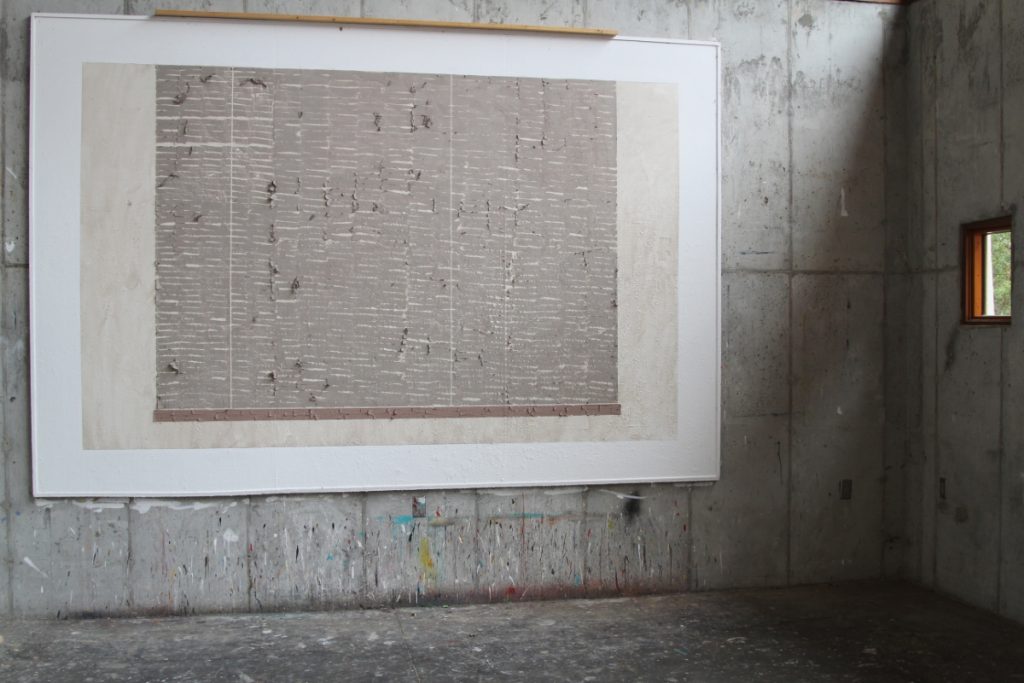
Within Its Place and Time. Time. 2019. 100 x 67 x 0.15 Inches. 254 x 170 x 0.3 cm. Unfired grey clay and red clay. Wood. 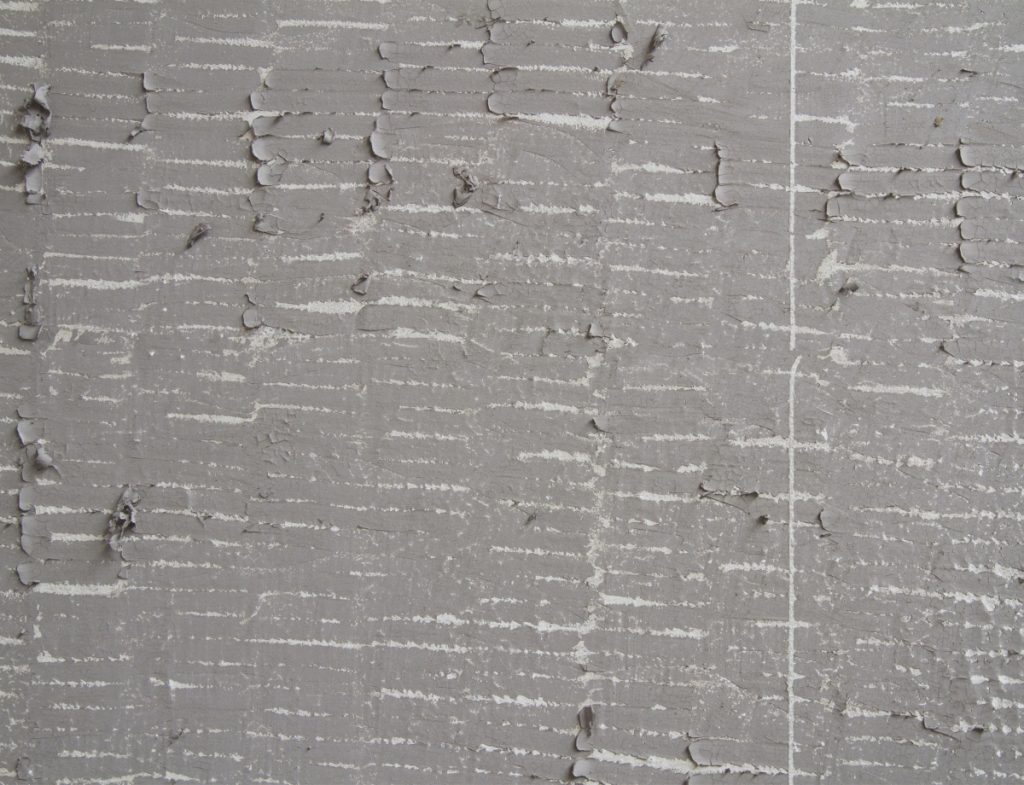
Within Its Place and Time. Time. 2019. Details. 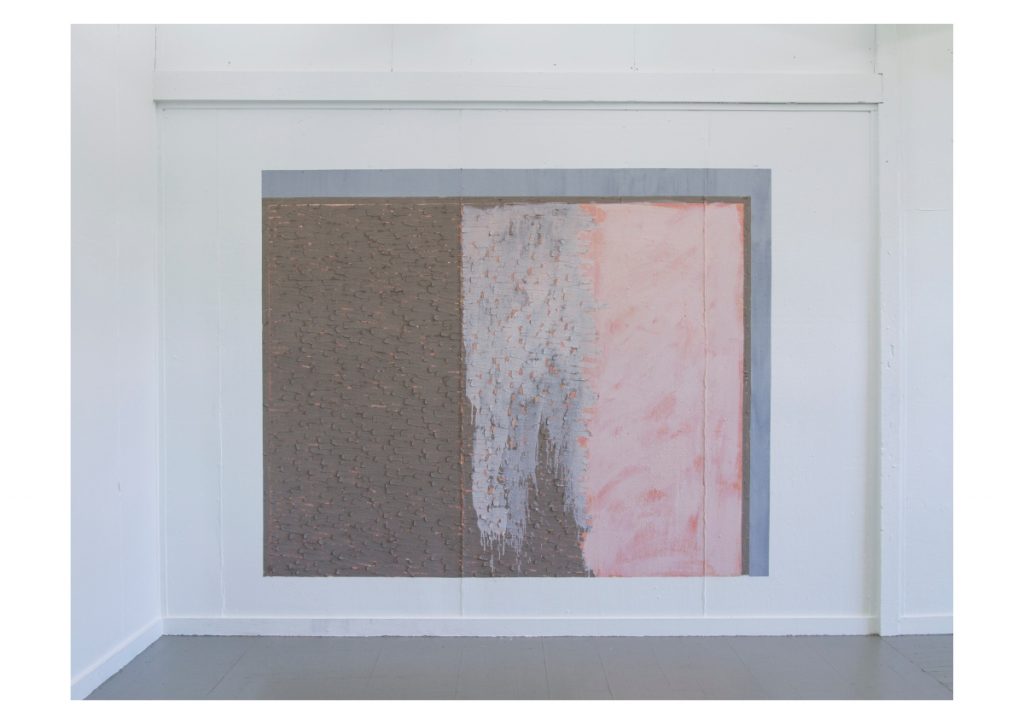
1 by 4. No. 1. 2019. 100 x 80 x 0.15 Inches. 254 x 203 x 0.3 cm. Unfired grey clay. Grey acrylic paint.Light coral acrylic paint wash. 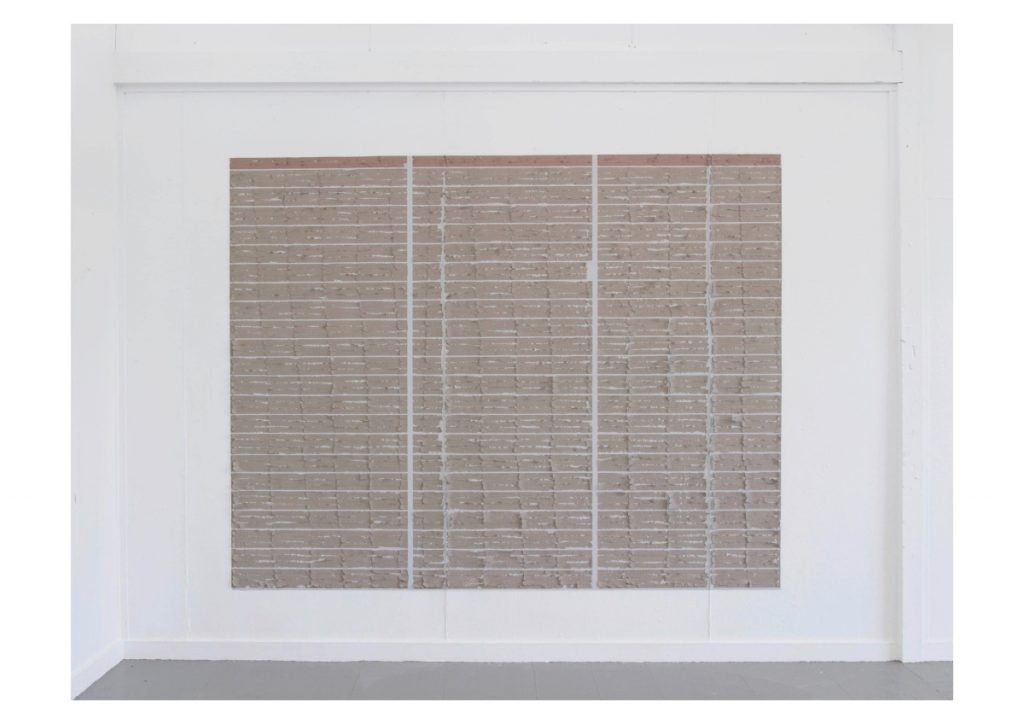
1 by 4. No. 2. 2019. 100 x 80 x 0.15 Inches. 254 x 203 x 0.3 cm. Unfired grey clay. Grey acrylic paint. 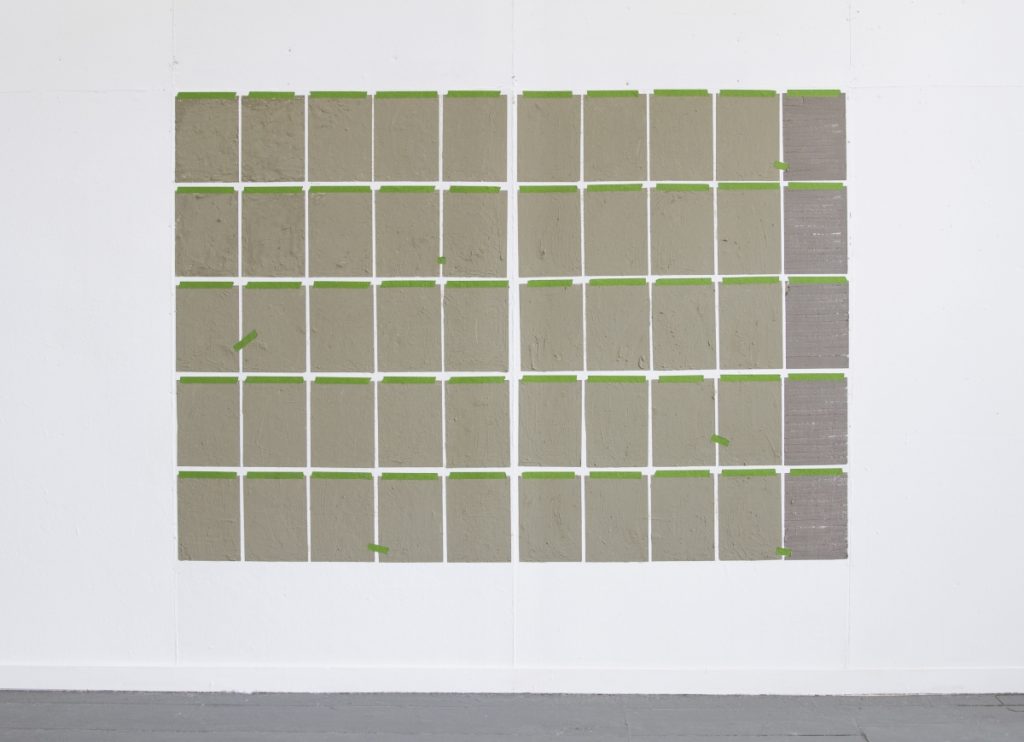
Pages. 2019. Unfired local clay and AMACO grey clay. Green tape. 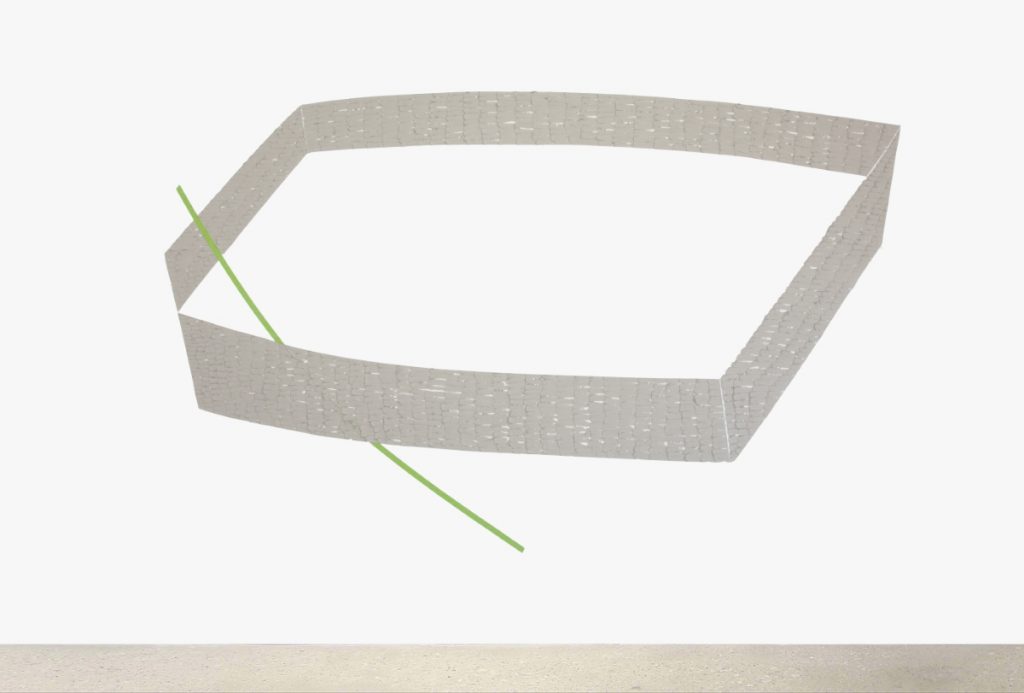
Within Its Place and Time. Place. 2018. 122 x 65 x 0.15 Inches. 310 x 165 x 0.3 cm. Unfired grey clay on the wall. Green tape. 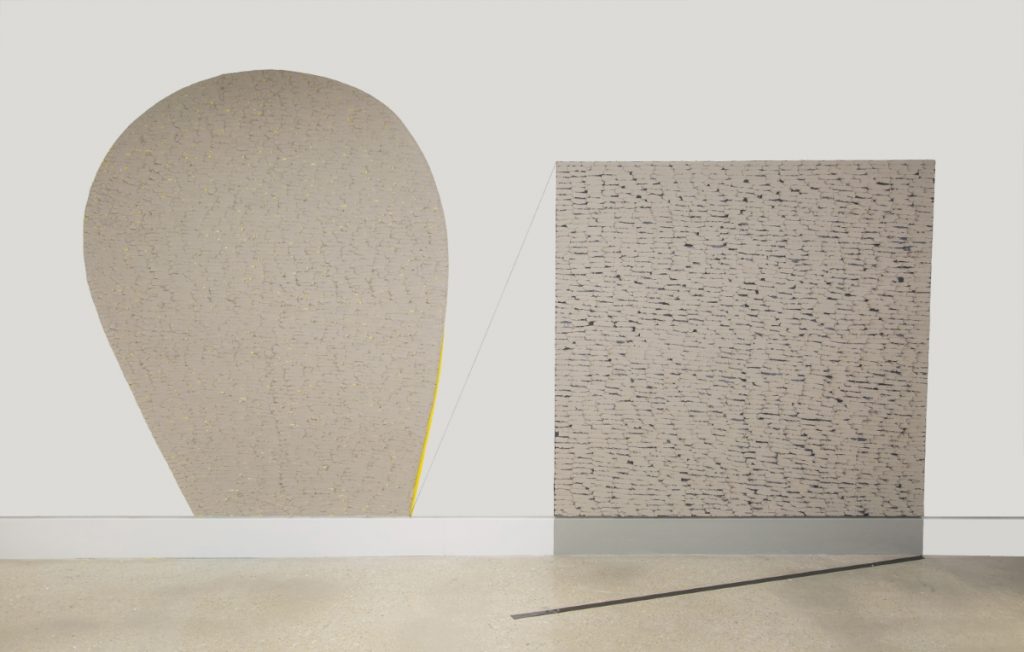
Much Ado About Nothing. 2. 2017. 160 x 90 x 0.15 Inches. 406 x 229 x 0.3 cm. Unfired grey clay on the wall. Yellow and black paint underneath the clay. Line formed with thread, and Black duck tape create alternating relationships and thresholds. 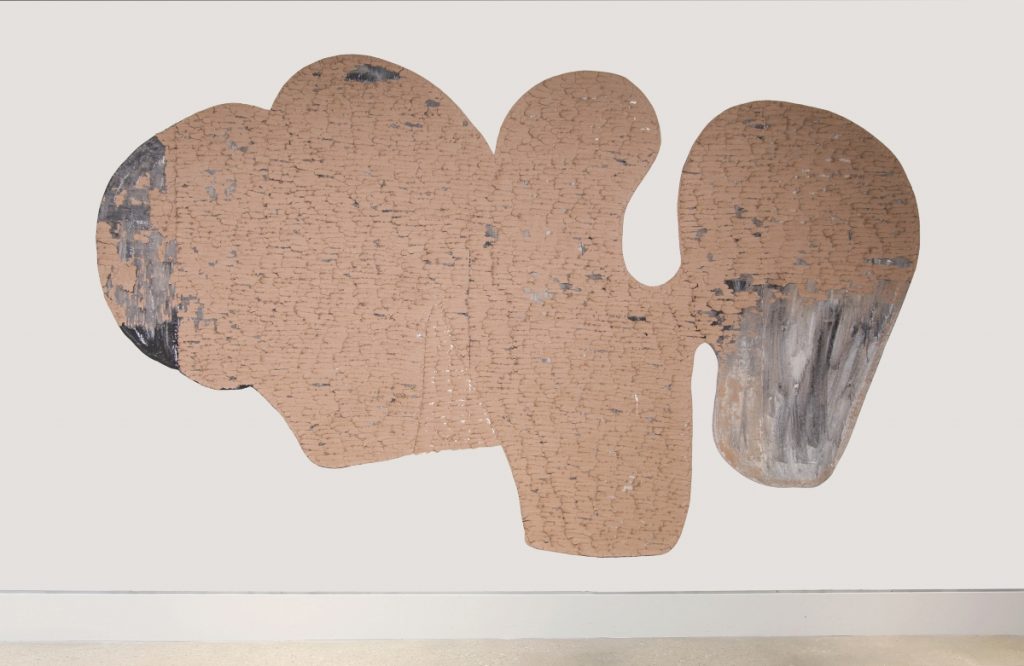
Much Ado About Nothing. 3. 2017. 134 x 68 x 0.15 Inches. 340 x 173 x 0.3 cm. Unfired red clay. Charcoal grey paint underneath the clay. 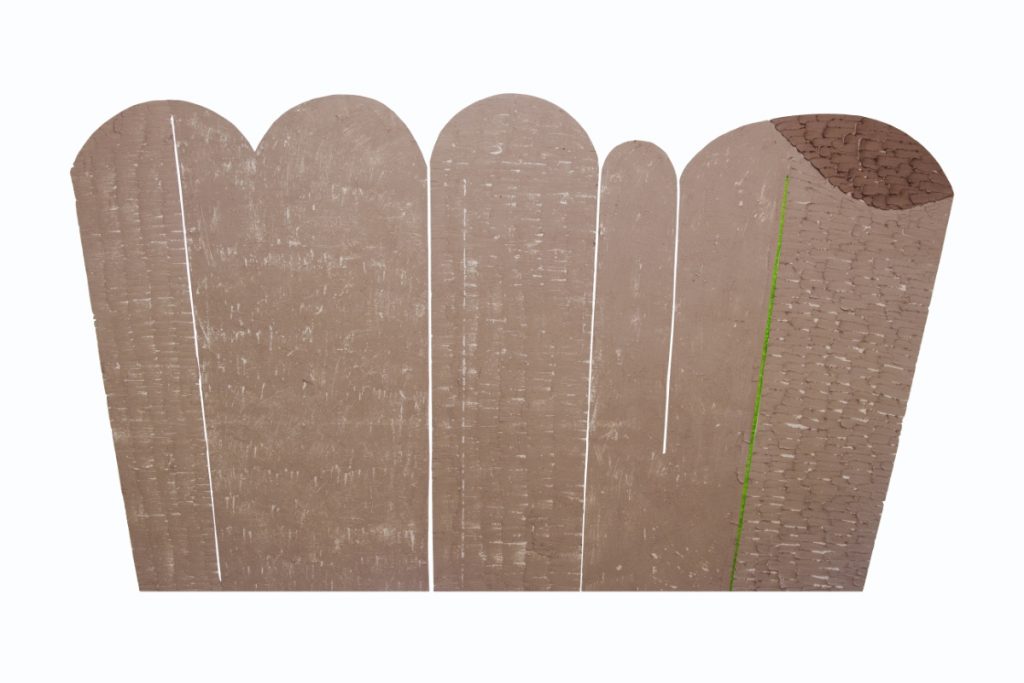
Within Its Place and Time. Patina. 2018. 96 x 55 x 0.15 Inches. 244 x 140 x 0.3 cm. Unfired red clay. Green tape. Photo Credits: Yewen Dong 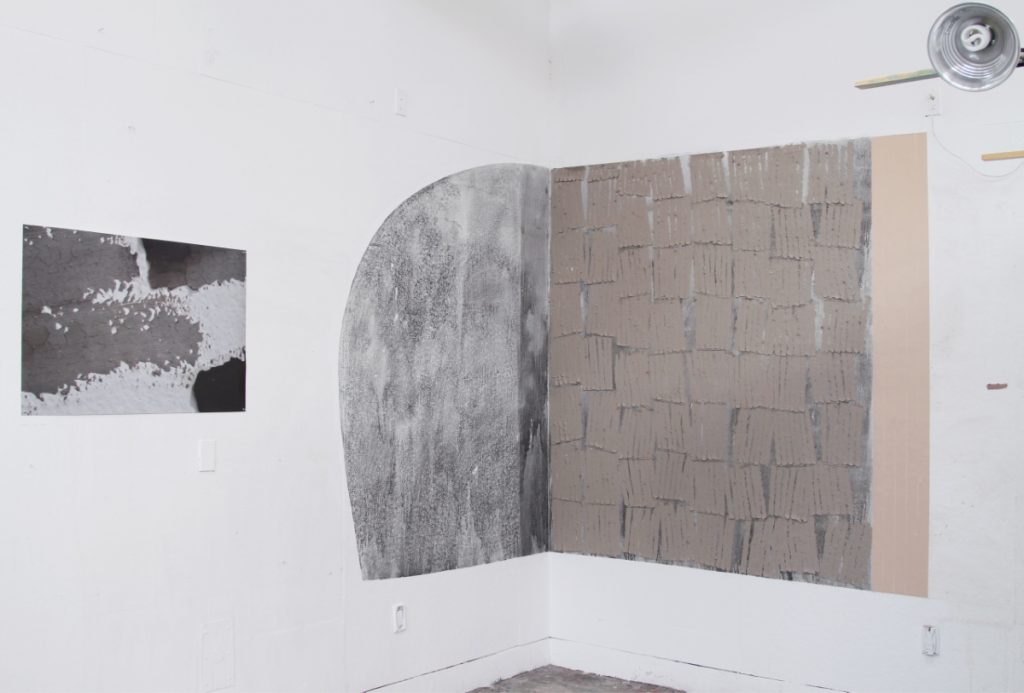
Within Its Place and Time. Place. 2019. Unfired grey clay and red clay. Black paint. In the image at the left side: Photgraph by Jeffrey McMahon.
Yewen Dong: Selected works, 2017-2019
My work explores the tension between artificial space and natural space. I am drawn to surface and materiality: solid and liquid, striated and smooth, city and landscape. I am interested in time as a physical material. My clay drawings focus on textures and shapes that mark the time related to my body’s movement. Methods I use include the hand pressing of clay and finger marks to record time as well as lapsed time.
The clay drawing installation process begins with me putting wet clay on a wall that dries slowly and eventually peels off. As time passes, the installation will decay to fragmented clay scattered on the floor. The crumbled clay has the history of being touched and it will leave its residual history on the wall as a palimpsest. Once the work is de-installed, the residue, washing and tracing will become part of the next work. In this way, the work lives with its current, residual, and palimpsest states simultaneously. These “moments” and “happenings” that arise and fade through the duration of the installation reflect the abstract nature of memory. If the clay wants to be fragile, like time, I prefer to let it be fragile. We can then stand back and watch the “happenings” of the material and how it changes with keen observation.


